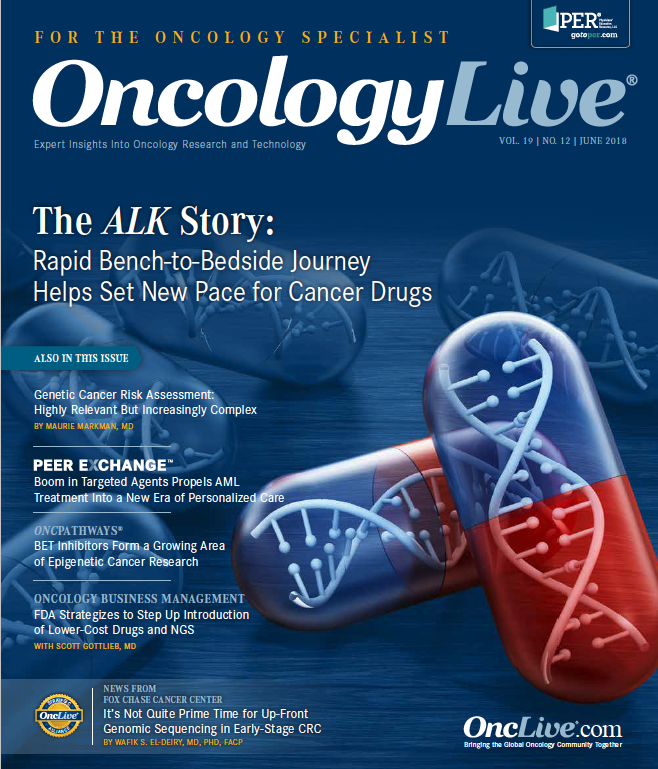Publication
Article
Oncology Live®
Patients Aged
Author(s):
Patients younger than 65 years experienced net cancer costs that were higher for breast, colorectal, lung, and prostate cancer compared with patients who were 65 years and older.
Matthew P. Banegas, PhD, MPH, associate professor of oncology and urology at Johns Hopkins Medicine

Matthew P. Banegas, PhD, MPH
Patients younger than 65 years experienced net cancer costs that were higher for breast, colorectal, lung, and prostate cancer compared with patients who were 65 years and older, according to results from a study by the Center for Health Research at Kaiser Permanente Northwest in Portland, Oregon.1 Lead investigator, Matthew P. Banegas, PhD, MPH, said the findings help to fill in the gaps in the literature about cancer care costs, especially in younger populations.
In general, medical care costs were highest for lung cancer and lowest for prostate cancer. For example, mean 1-year mean total costs for lung cancer ranged from $50,700 (stage I) to $97,400 (stage IV) among those aged <65 years and from $44,000 (stage I) to $71,200 (stage IV) among patients aged ≥65 years (Figure). Net costs were defined as the difference in mean total costsbetween patients and controls who were enrolled in 4 health plans.
Much of the historical research that has been conducted uses data from the Surveillance, Epidemiology, and End Results (SEER)-Medicare linked database, which is not comprehensive. Banegas, an investigator with Kaiser Permanente Northwest, drew data from other sources, with the goal of advancing the potential for fruitful research.
“Although the SEER-Medicare database is an incredibly valuable source of data, it is limited to Medicare fee-for-service beneficiaries,” said Banegas. “That excludes people without Medicare or individuals who receive Medicare through private insurance, like Medicare Advantage,” he said.
Thirty-one percent of all Medicare enrollees receive their care through Medicare Advantage plans, said Banegas. “Because cancer is not just a disease of the aged, my colleagues and I thought it was important to improve our understanding and estimates of cancer care costs across all ages in the United States,” he said. “We want to highlight the high cost of cancer care in that under 65 population.”
The findings provide helpful inputs for economic analyses, comparative effectiveness studies, and tools such as the National Cancer Institute’s Cancer Intervention and Surveillance Modeling Network (CISNET), which aim to guide public health research and priorities, facilitating the development of optimal cancer control strategies. “We hope our findings are used in cost-effectiveness or comparative analyses, so researchers and policymakers can improve the quality of the cost inputs,” said Banegas.
Patients included in the study were members of 4 health plans that are part of the Cancer Research Network, which consists of Kaiser Permanente Washington (formerly Group Health Cooperative), Henry Ford Health System, Kaiser Permanente Colorado, and Kaiser Permanente Northwest. A total of 45,522 adults served as cases, compared with 314,887 frequency-matched controls who did not have a cancer history. The patients were stratified by age, sex, and health-plan eligibility. Eligible patients were diagnosed between January 1, 1988, and December 31, 2007, and had at least 30 days of continuous health-plan eligibility during the study period (January 1, 2000, through December 31, 2008).
Figure. Mean Total and Net Costs of Medical Care for Lung and Prostate Cancer
Adapted from reference 1. Net costs were defined as the difference in mean total costs between patients and controls who were enrolled in 4 health plans.
aData represent first-year costs following diagnosis and first 5 years following diagnosis.
The findings will be important to healthcare systems, providers, and employers, said Banegas. “The younger age group and investments in early detection and prevention programs for employers can be impacted by the findings,” he said. “If we can identify those younger individuals through early diagnosis and provide routine preventive care, employers and health plans can avoid those future cancer costs, at later stages of disease.”
Among the 4 cancer types, patients with prostate cancer had the lowest costs, and patients who had lung cancer were at the other end of the cost spectrum, according to the study. Banegas pointed out that “some of these other cancers do have more costly treatment, which could be a factor adding to the cost. A lot of lung cancer treatment and late-stage colorectal treatment costs dwarf the costs of care for prostate cancer.” To estimate the cost of cancer care, the researchers used a phase-of-care approach, which breaks down the continuum of cancer care into 3 time periods: initial phase (first 12 months following diagnosis), end-of-life (EOL) phase (final 12 months of life), and continuing phase (all months between the initial and EOL phases). “The approach helps researchers compartmentalize the costs of cancer over a long period of time. Also, it is an efficient use of data,” said Banegas.
From previous research, the year after initial diagnosis involves high intensity healthcare resource use, resulting in high costs. The costs for that 1 year were stratified following the diagnosis, said Banegas. “Alternatively, at the last 12 months of life we see super high-intensity healthcare use and high costs. Using this approach allows us to break down the costs into clinically relevant periods.”
“The continuing phase is that time when people have completed their treatments and they’re trying to get back to normalcy. They are returning to work. It’s a period that they may see late or long-term effects of cancer treatment,” he said. “If we look at patients with a history of cancer, as compared with those without a history, those folks in the continuing phase still have a greater cost compared with the person with no history.”
Banegas MP, Yabroff KR, O'Keeffe-Rosetti MC, et al. Medical care costs associated with cancer in integrated delivery systems. J Natl Compr Netw. 2018;16(4):402-410. doi: 10.6004/jnccn.2017.7065.
Each of the 4 health plans has a tumor registry and an integrated electronic health record database. These plans provide both private and public health insurance coverage, including Medicare Advantage and Medicaid risk contracts.



























%20(2)%201-Recovered-Recovered-Recovered-Recovered-Recovered-Recovered-Recovered-Recovered-Recovered-Recovered-Recovered-Recovered-Recovered-Recovered-Recovered-Recovered-Recovered.jpg?fit=crop&auto=format)
%20(2)%201-Recovered-Recovered-Recovered-Recovered-Recovered-Recovered-Recovered-Recovered-Recovered-Recovered-Recovered-Recovered-Recovered-Recovered-Recovered-Recovered-Recovered.jpg?fit=crop&auto=format)
